Diverse Application Areas
The versatility of polymer derived ceramics is a key driver in the Polymer Derived Ceramics Market. These materials are increasingly being utilized across various sectors, including healthcare, electronics, and energy. In the medical field, for instance, their biocompatibility makes them suitable for implants and prosthetics. In electronics, the demand for high-performance insulators and substrates is driving the adoption of polymer derived ceramics. The energy sector is also leveraging these materials for applications in fuel cells and batteries, where their thermal and chemical stability is advantageous. This broad range of applications is expected to propel the market forward, with estimates suggesting a growth trajectory of approximately 6% per year. The ability to tailor properties for specific applications further enhances the appeal of polymer derived ceramics.
Rising Demand in Aerospace and Defense
The aerospace and defense sectors are emerging as significant contributors to the Polymer Derived Ceramics Market. The need for lightweight, high-strength materials that can withstand extreme conditions is driving the adoption of polymer derived ceramics in these fields. These materials offer excellent thermal resistance and mechanical properties, making them ideal for applications in aircraft components and military equipment. The market is projected to see a growth rate of around 9% as defense budgets increase and the aerospace industry continues to expand. Additionally, the push for more fuel-efficient aircraft is likely to further enhance the demand for advanced materials, including polymer derived ceramics, which can contribute to weight reduction and improved performance.
Sustainability Initiatives Driving Demand
Sustainability initiatives are becoming increasingly pivotal in the Polymer Derived Ceramics Market. As industries strive to reduce their carbon footprint, the demand for eco-friendly materials is on the rise. Polymer derived ceramics, known for their low environmental impact during production and disposal, align well with these sustainability goals. The market is witnessing a shift towards the use of renewable resources in the synthesis of these ceramics, which not only reduces waste but also enhances the overall lifecycle of the products. This trend is expected to contribute to a market growth rate of around 7% annually, as manufacturers and consumers alike prioritize sustainable practices. The emphasis on recycling and reusability of materials further supports the expansion of the Polymer Derived Ceramics Market.
Growing Investment in Research and Development
Investment in research and development is a significant driver for the Polymer Derived Ceramics Market. As industries recognize the potential of these materials, funding for R&D initiatives is increasing. This investment is aimed at exploring new formulations and processing techniques that can lead to enhanced performance characteristics. Collaborations between academic institutions and industry players are fostering innovation, resulting in the development of advanced polymer derived ceramics with unique properties. The market is likely to benefit from these advancements, with projections indicating a potential increase in market size by 10% over the next few years. The focus on developing cost-effective production methods is also expected to make these materials more accessible, further driving market growth.
Technological Advancements in Polymer Derived Ceramics
The Polymer Derived Ceramics Market is experiencing a surge in technological advancements that enhance the performance and applicability of these materials. Innovations in synthesis techniques, such as sol-gel processes and chemical vapor deposition, are enabling the production of ceramics with superior mechanical properties and thermal stability. These advancements are crucial for applications in aerospace, automotive, and electronics, where high-performance materials are essential. The market is projected to grow at a compound annual growth rate of approximately 8% over the next five years, driven by the increasing demand for lightweight and durable materials. Furthermore, the integration of nanotechnology into polymer derived ceramics is likely to open new avenues for enhanced functionalities, thereby expanding the market's potential.


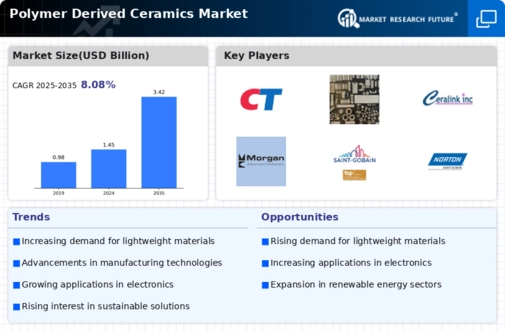


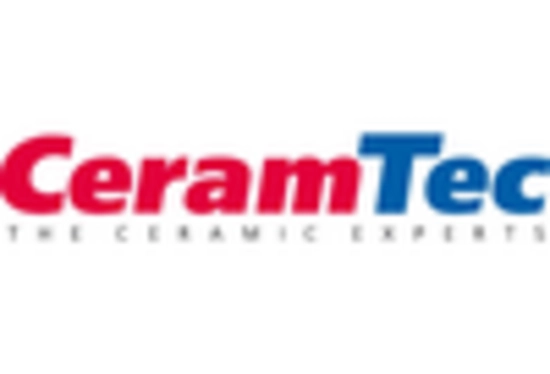
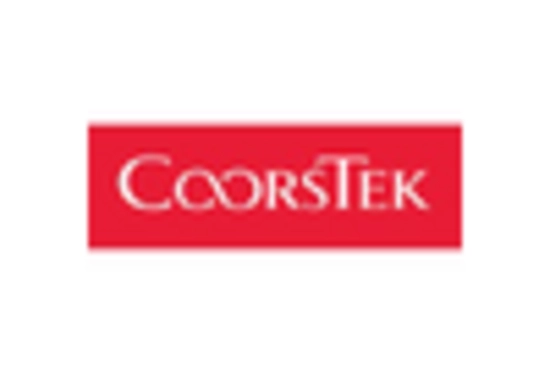
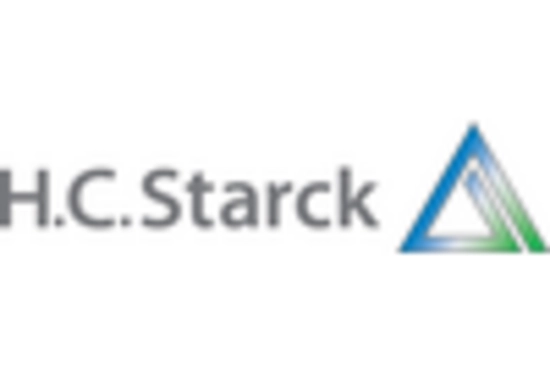

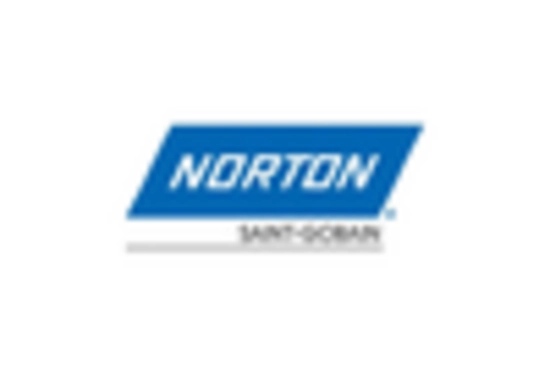








Leave a Comment